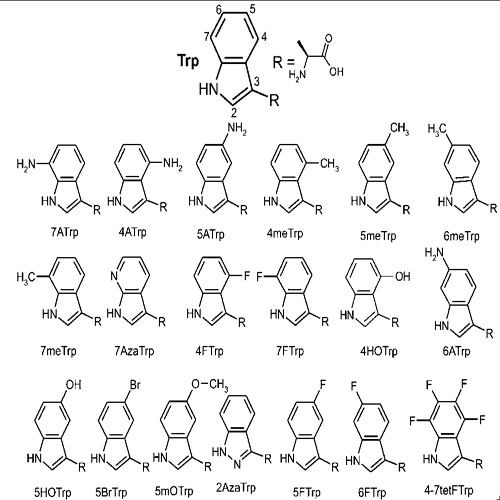Docking of tryptophan analogs to trytophanyl-tRNA synthetase: implications for non-canonical amino acid incorporations
22-May-2008
Biol.Chem, 2008, 378, 1173-82 published on 22.05.2008
The Journal Of Biological Chemistry, online article
The Journal Of Biological Chemistry, online article
Non-canonical amino acids (NAA), as building blocks for peptides and proteins during ribosomal translation, represent a nearly infinite supply of novel functions. The specific selection, activation and tRNA-charging of amino acids by aminoacyl-tRNA synthetases (AARS) in the aminoacylation reaction are essential steps. In most cases, aminoacylation of NAA is a good indication that the related amino acid will participate in ribosomal translation as well. However, testing the translational capacity of amino acid analogs has technical limitations. Therefore, a rapid and reliable in silico test for NAA recognition by AARS would be advantageous in experimental design. We chose tryptophanyl-tRNA synthetase from Escherichia coli as a model system for docking studies with various tryptophan analogs using the FlexX-Pharm strategy. We were able to calculate relative binding energies for Trp analogs in TrpRS that correlate well with their translational activities in E. coli. In particular, FlexX-Pharm predicted the binding sites of fluoro-, amino-, hydroxyl- and aza-containing Trp analogs within 1.5 A° of Trp in the homology model of E. coli TrpRS. Therefore, the use of ligand docking prior to NAA incorporation experiments might provide a straightforward means for determining NAA that can be efficiently incorporated into a protein.











